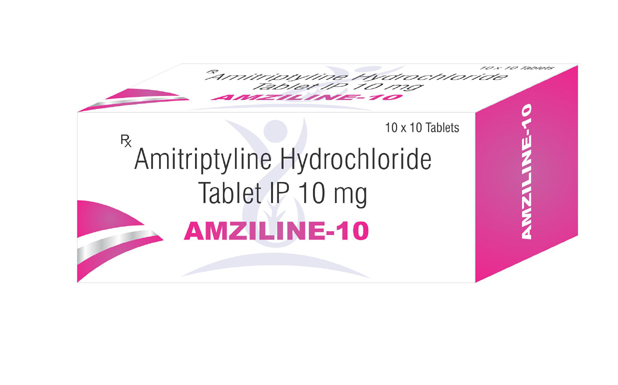Indications:
This medication is used to treat mental mood and problems such as depression. It may help improve mood and feelings of a person, relieve anxiety and tension, it helps you sleep better, and increase your body’s energy level. The medication belongs to a tricyclic antidepressants class of medications.
Mechanism of action:
Amitriptyline hydrochloride is an antidepressant . It is having a sedative effects. Its mechanism of action in man is not fully elucidated Amitriptyline inhibits the membrane pump mechanism responsible for re- uptake of norepinephrine and serotonin in adrenergic and serotonergic neurons , thereby increases concentration at the synaptic clefts of the brain . The monoamine hypothesis in depression, one of the oldest hypotheses, postulates that deficiencies of serotonin (5-HT) or norepinephrine (NE) neurotransmission in the brain lead to depressive effects.
Amitriptyline inhibits neuronal reuptake of serotonin and noradrenaline from the synapse in the central nervous system, this increases their availability in the synapse to cause neurotransmission on the post synaptic neurone.
Pharmacokinetics:
Amitriptyline is a highly lipophilic molecule ,Solubility in water is 9.71 mg/litre at 24 °C.
It is readily absorbed from the gastrointestinal tract and is extensively metabolized on first pass through the liver.It is metabolized mostly by CYP2D6, CYP3A4, and CYP2C19-mediated N-demethylation into nortriptyline, which is another TCA. It is 96% bound to plasma proteins; nortriptyline is 93–95% bound to plasma proteins.It is mostly excreted in the urine around 30–50%) as metabolites within 24 hours.2% of the unchanged drug is excreted in the urine. Some Small amounts are also excreted in feces.It has an elimination half life of 25 hours. Therapeutic levels of amitriptyline range from 75 to 175 ng/mL or 80–250 ng/mL of both amitriptyline and its metabolite nortriptyline.
Contraindications:
The known contraindications of amitriptyline are
● Hypersensitivity to TCAs or to any of its excipients
● History of arrhythmias, particularly heart block to any degree
● Congestive heart failure
● Coronary artery insufficiency
● Mania
● Severe liver disease
● Patients who are taking monoamine oxidase inhibitors (MAOIs) or have taken them within the last 14 days.
Side Effects:
● constipation, diarrhea
● nausea, vomiting, upset stomach;
● mouth pain, unusual taste, black tongue;
● appetite or weight changes;
● urinating less than usual;
● itching or rash;
● breast swelling can occur in men or women
● decreased sex drive, impotence, or difficulty having an orgasm.
